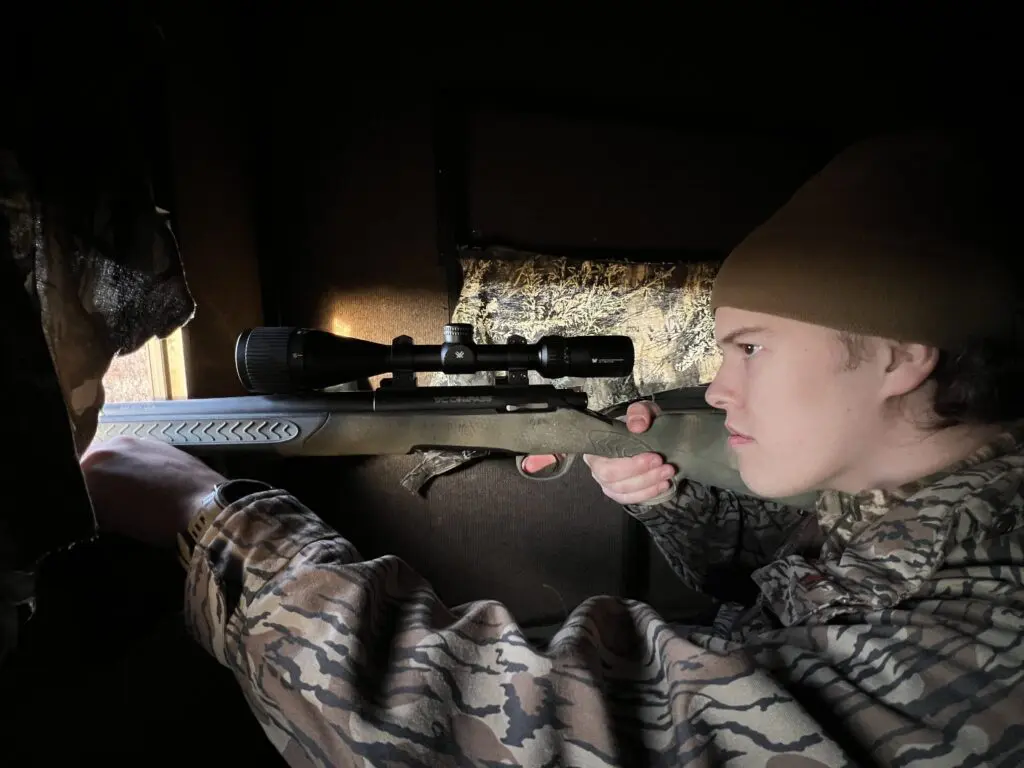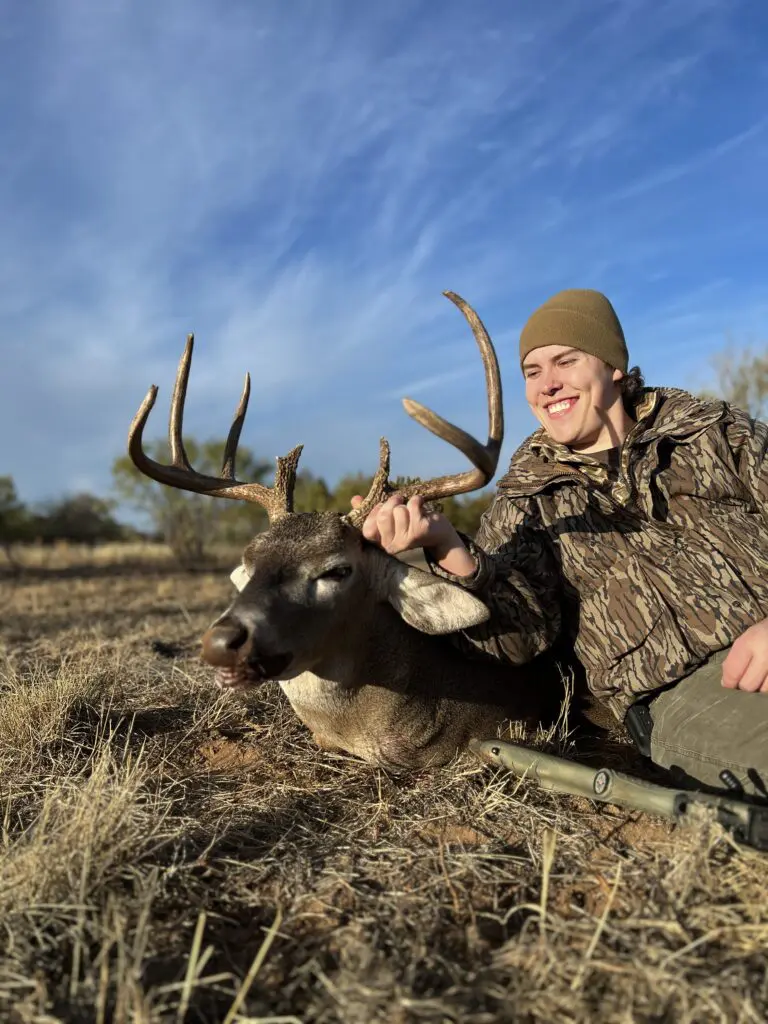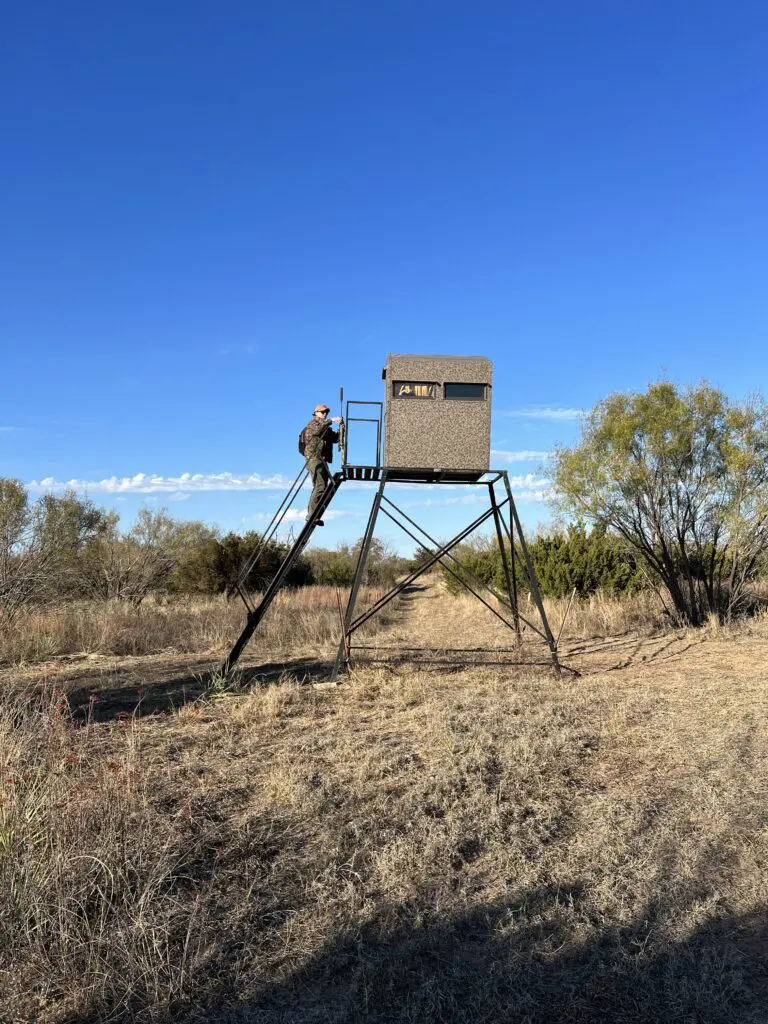On his first morning in a deer blind during his first deer hunt, Andrew Starnes saw more deer activity than he could have imagined.
The 24-year-old arrived at the Stonewall County ranch late on the night of Nov. 27, as he works in retail and couldn’t leave early. Fortunately, as a U.S. Army veteran and retail and gunsmith employee at Mission Ridge Range & Academy, his sighted-in rifle or his shooting skills weren’t in question.
At the DUX Expo at the Texas Motor Speedway in May, the opportunity came for the born-and-raised Garland resident to make his first deer hunt with the Lone Star Outdoor News Foundation. When asked if all of the employees of Mission Ridge in their booth had hunted deer, all had — except for Starnes.
“I have hunted dove and went on one duck hunt,” he said. “My dad hunted ducks some but that was it in my family.”
After a short night’s sleep, Starnes was headed to the deer blind called the “Rattlesnake Blind.” Within 10 minutes of arriving and well before the feeder threw any corn, there were deer in front of them, including a nice buck that walked right through the group and led the deer away.
“Then the feeder went off and a doe and fawn came right back,” Starnes said.
A few minutes later two bucks, including one from the right, came walking in.
“That’s a good deer,” said his guide, David Sams. “You can take him if you want.”
Let’s see what he does,” Starnes replied.
Both bucks in the area were mature 8-pointers and Sams gave the green light to take the one Starnes liked best.
“I had my gun ready and looked through the scope,” Starnes said. “I watched him for a minute and then decided to take him.”
The buck presented a mostly broadside shot, and Starnes fired. The deer dropped and didn’t move.
“It was a perfect shot,” Sams said. “He seemed totally calm.”
Starnes said his adrenaline shot up right before he shot, and again after the deer was down.
“I shoot guns for a living and I was forgetting to breathe,” he said. “David reminded me. I took a deep breath and squeezed it off.”
Starnes said shooting the .308 with a suppressor made the shot more rewarding.
“There was no recoil,” he said. “I could see him drop through the scope. Afterwards, I was real jittery though.”
After a short, 10-minute wait to see if a spike would return, the two retrieved and loaded the deer after taking photos.
Back at camp, it was time for field dressing.
“I was moving stuff around with my hand and popped the stomach — I didn’t even have a knife yet,” Starnes said. “That made me a little queasy.”
Later, he learned to skin and process the deer, and the cape and antlers will head to a taxidermist friend.
“I was really interested in all the meat,” he said. “We talked about recipes and how to mix the venison to make hamburger.”
Starnes said his hesitation to shoot one of the 8-pointers in the morning wasn’t from buck fever.
“I liked both of the deer, but I was thinking, ‘Maybe this is too easy,”’ he said.
Sams replied, “I know it seems easy, but you probably should go ahead and shoot the deer.”
The afternoon hunt, along with two hunts the next day, showed Starnes why hunters take advantage when the right buck comes by, even if it’s on the first hunt.
“We saw very little the rest of the time,” he said. “On one hunt, the wind switched. The next morning, nothing came in. That night, we had some deer but no bucks old enough to shoot — the best-looking buck was too young. We did rattle in one young buck which was cool. It ran within 30 feet of me.”
Starnes came back to Garland after being stationed as an infantry soldier in New York with the U.S. Army, and being deployed to Afghanistan in 2020. After a serious injury, he was sent home early.
“I’m now enjoying life,” he said.
Starnes appreciated the full experience of a typical Texas deer hunt, including skinning and processing the deer and time at the campfire telling stories and discussing future hunting plans, including opportunities for veterans, leases and other ways to get involved.
“It was a great experience,” he said.





